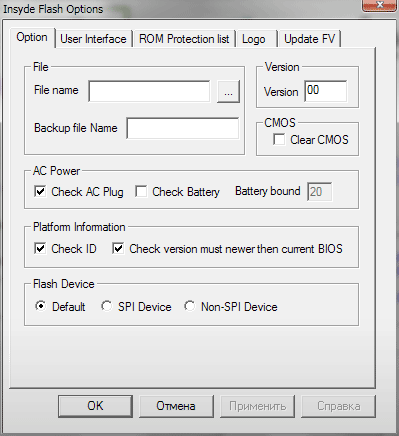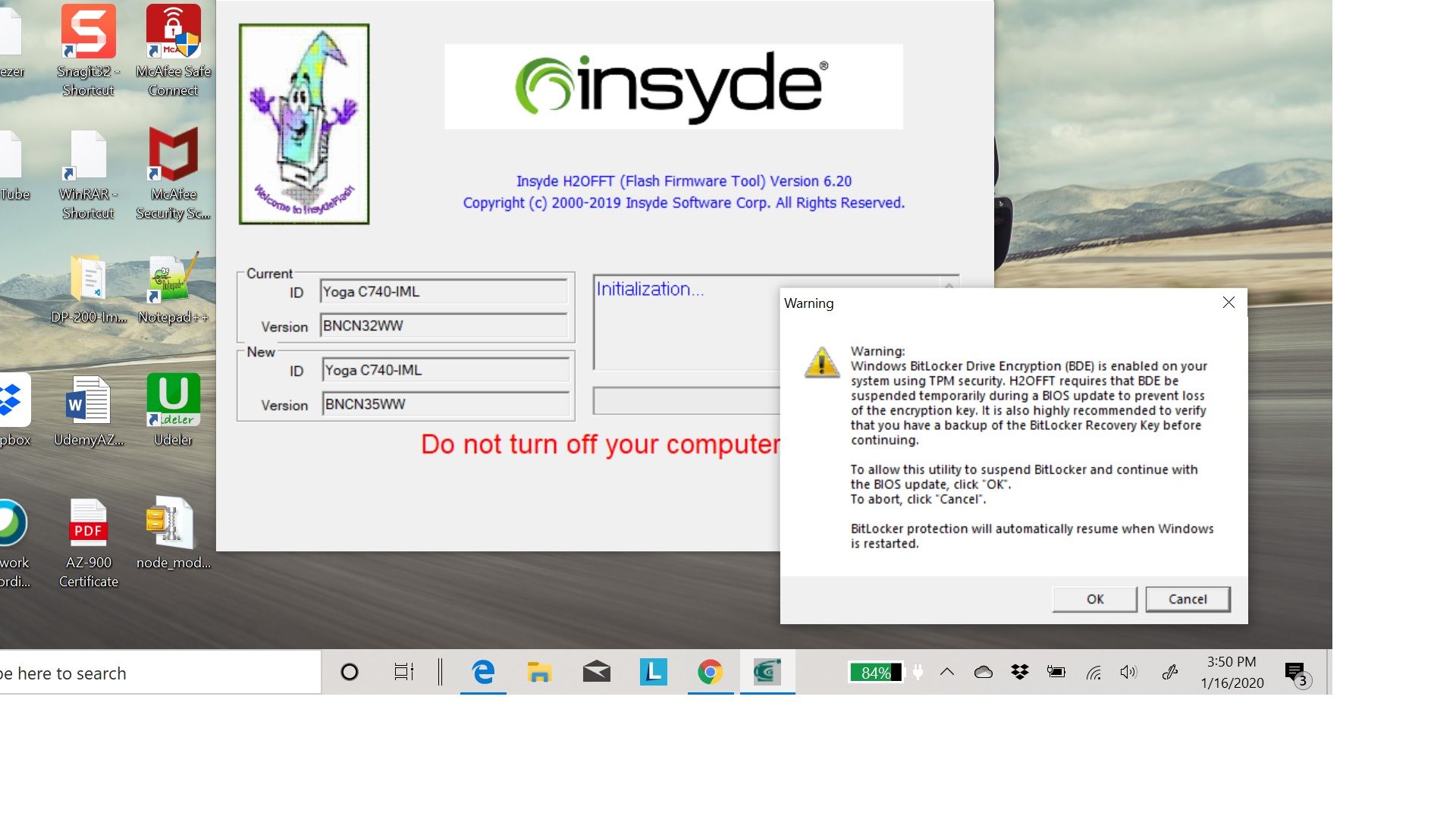This article explain how to create a booteable USB stick to flash an EFI flasheable file under DOS enviroment.

Tools for unpacking and modifying an InsydeH2O UEFI BIOS. This code base has been merged into the excellent coreboot project as part of their biosextract tools. Dell 64BIT BIOS Flash Utility Installation instructions Download the BIOS executable for the specific system that you are going to update and place it in a directory of your choice. Insyde bios flash tool download notice Top 4 Download periodically updates drivers information of insyde bios flash tool full drivers versions from the publishers, but some information may be slightly out-of-date. Flash Bios Utility Download. All kidding aside, more importantly, are all ACER bios releases unsigned?

Is my EFI InsydeH2O?
The easiest way to figure that is looking on the 'BIOS POST Screen' for this image:

Step 0 - Preparing the work enviroment
- You must create a folder on your desktop to use it as workspace. I will use one named 'Toolbox'.
- Your current Windows user account must have administrator rights.
- You must have the Windows based executable file that contains the EFI flasheable file. If you don't have one, enter to Support Website page and get one for your computer. I will use one named 'EFIUPDATEPACKAGE.EXE'.
- Step 0 done.
Step 1 - Preparing working tools
- Download and install 7-Zip.
- Download 'HP USB Disk Storage Format Tool' here. Save this file inside 'Toolbox' folder.
- Download 'DOS Files' here. Save this file inside 'Toolbox' folder.
- Download 'Flash It Tool' here. Save this file inside 'Toolbox' folder.
- Extract files downloaded in 2, 3 and 4. A folder will be created for each extracted ZIP file.
- Step 1 done.
Step 2 - Creating a booteable USB stick
- Connect your USB stick. Make a backup of it contents if necessary.
- Open 'HP USB Disk Storage Format Tool' folder and execute 'HPUSBFW.EXE' with administrator rights.
- Follow these easy steps as shown below:
- Search and select 'DOS Files' folder:
- Click on 'Accept' button and then click on 'Start' button to initiate the process.
- A warning window appears. Click on 'Yes' button and wait until the entire process is completed.
- Click on 'Accept' button to close the summary window and then click on 'Close' button to close the application.
- Step 2 done.
Step 3 - Copying the flashing tool
Insydeflash Utility Download
- Open 'Flash It Tool' folder.
- Select all files and copy them to the root directory of your USB stick.
- Step 3 done.
Step 4 - Extracting the Windows based EFI update package
- Copy 'EFIUPDATEPACKAGE.EXE' file to your 'Toolbox' folder.
- Secondary click (left click) on 'EFIUPDATEPACKAGE.EXE'.
- Select '7-Zip', then select 'Extract to 'EFIUPDATEPACKAGE'.
- A new folder named 'EFIUPDATEPACKAGE' will be created with files inside.
- Open 'EFIUPDATEPACKAGE' folder and open 'platform.ini' file. It's important to keep this file open.
- Step 4 done.
Step 5 - Finding the flasheable EFI file
- In 'platform.ini' file, search for the section called '[FDFile]'.
- Look for the 'FileName' attribute. This attribute sets the flasheable EFI file name.
- Look inside your 'EFIUPDATEPACKAGE' folder for that file, and rename it to 'FLASHME.ROM'.
- Copy 'FLASHME.ROM' file to the root directory of your USB stick.
- Step 5 done.
Step 6 - Setting the computer platform
Insyde Bios Flash Utility Download
- Look inside your USB stick and open the 'IDS.id' file with a plain text editor (notepad is enough).
- In 'platform.ini' file, search for the section called '[Platform_Check]'.
- Copy each 'PlatformName' attribute (only if it have a non-empty value) to 'IDS.id' file.
- Saves changes to IDS.id file.
- Step 6 done.
Step 7 - Finishing
- Close all files and folders opened.
- Remove securely your USB stick.
- Step 7 done.
Appendix A - Flash It Tool parameters established
/U /S /G /V /ALL /PMCAF:IDS.id
Appendix B - Flash It Tool parameters
Insyde Bios Flash Utility Download
| Parameter | Information |
| /U | Show confirm message |
| /N | Do not reboot after flash |
| /S | Shutdown after flash |
| /G | Save current BIOS to file |
| /AC | Do not check AC plug in |
| /AB | Check battery life percent |
| /MC | Skip all platform model check |
| /PQ | Query ROM protection MAP in current ROM |
| /I:String | Update logo (need Himem.sys) |
| /O:String | Output file (Must use with /I) |
| /LG:String | Logo GUID; update small logo required (must use with /I) |
| /B | Flash PEI volume |
| /ALL | Flash all |
| /E: Offset(Hex), Size(Hex), Address(Hex) | Update fix size from file offset to physical address |
| /FM | Flash CPU Microcode |
| /FV | Flash Variable |
| /FD | Flash DXE |
| /FE | Flash EC |
| /FL | Flash logo |
| /FP | Flash password |
| /FN | Flash OEM NVS |
| /FT:value | Flash OEM special type |
| /LF | Load Fd file by another floopy disk |
| /C | Clear CMOS |
| /PS | Flash SPI flash part |
| /PN | Flash non-SPI flash part |
| /V | Verify file integrity |
| /RV | Read variable |
| /WV:String | Write variable to new string |
| /WU:String | Write variable (UNICODE) |
| /1 | Save current BIOS to file (1Mbits from memory) |
| /2 | Save current BIOS to file (2Mbits from memory) |
| /4 | Save current BIOS to file (4Mbits from memory) |
| /8 | Save current BIOS to file (8Mbits from memory) |
| /DI | Disable ID display |
| /RB:Filename | Read variable (to a binary file) |
| /WB:Filename | Write variable (from a binary file) |
| /UU:String | Compare UUID with current BIOS |
| /SE:String | Compare serial number with current BIOS |
| /GU:String | Compare GUID with current BIOS |
| /PMCA:ModelName | Used to check Platform model name |
| /PMCAF:FileName | Used to check Platform model name inside FileName |